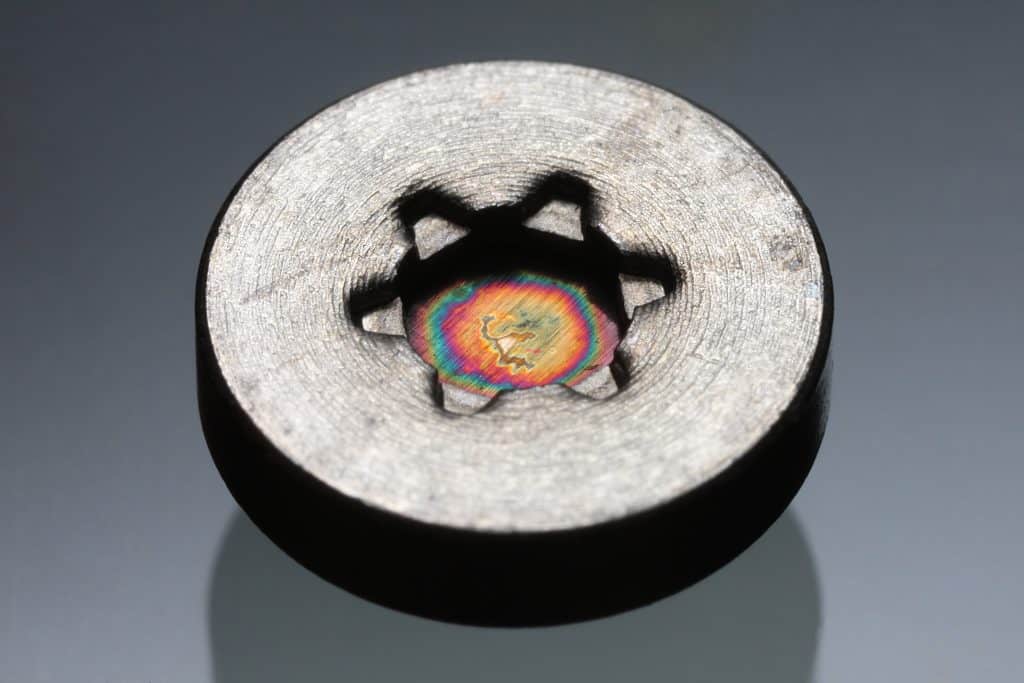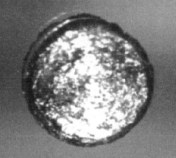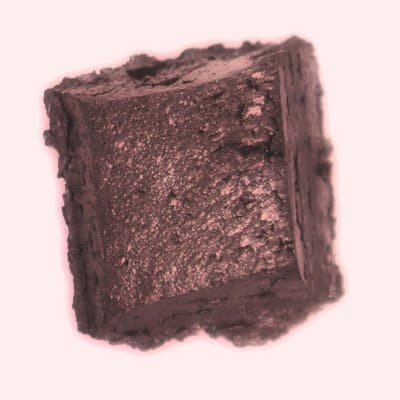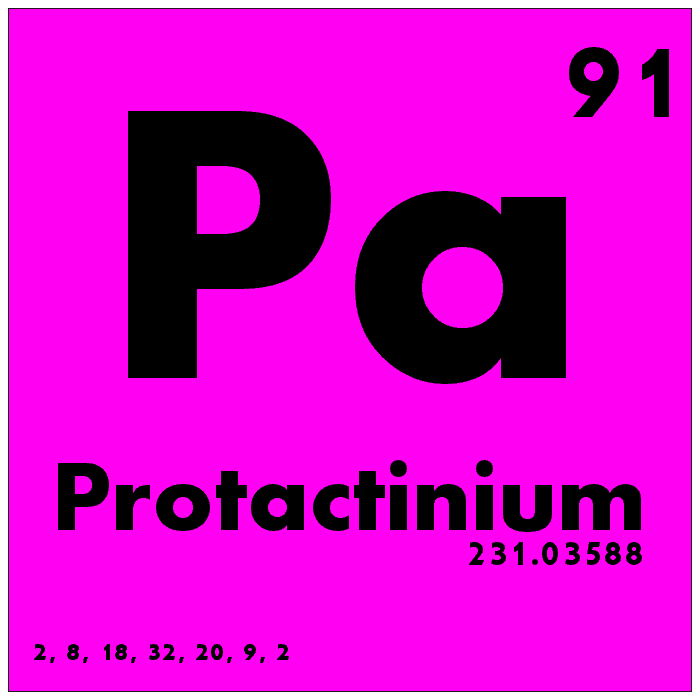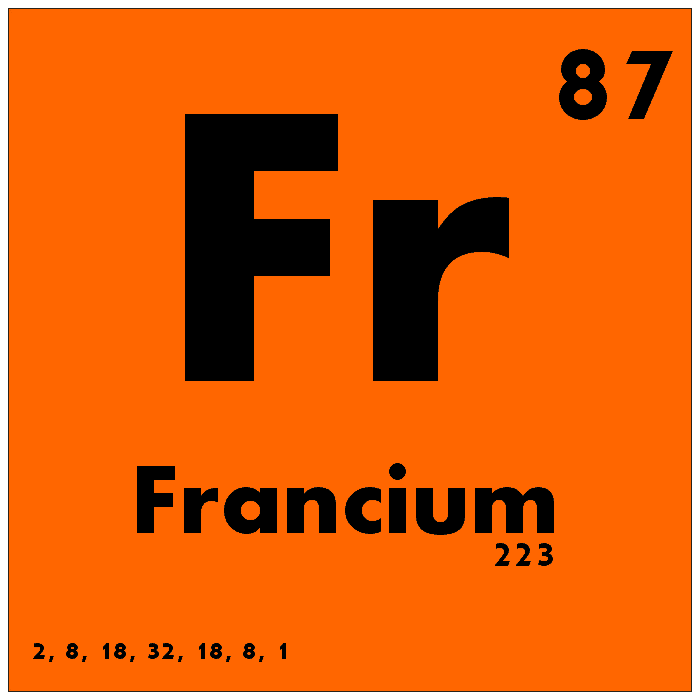Everyone is probably familiar with the more common elements on the periodic table, such as Hydrogen, Gold, and Oxygen, but the rare elements on this list aren’t talked about often outside of the scientific community. Essentially all of the rarest elements on Earth are radioactive and don’t have commercial/practical uses. Most of these elements are only used for research and don’t even last long enough to be studied thoroughly. All of the elements on this list exist in fairly small amounts either in nature or synthetically.
- Neptunium
- Curium
- Americium
- Californium
- Promethium
- Protactinium
- Francium
- Berkelium
- Oganesson
- Astatine
Atomic Number: 93
Atomic Weight: 237 (most stable isotope)
Element Category: Actinide
Common Uses: Precursor in Plutonium production; used in devices for detecting high-energy (MeV) neutrons; radioisotope thermal generators to provide electricity for spacecraft

photo source: Wikimedia Commons
Neptunium is the first transuranic element, coming just after Uranium on the periodic table. Trace amounts of some Neptunium isotopes, Neptunium-237 and Neptunium-239, are found naturally as decay products from transmutation reactions in uranium ores. Most Neptunium is produced by neutron irradiation of uranium in nuclear reactors. Neptunium is mostly a byproduct of in conventional nuclear power reactors, and has no commercial uses. However, Neptunium is used as a precursor in Plutonium production and as radioisotope thermal generators to provide electricity for spacecraft.
Did You Know?
Since Uranium was named after the planet Uranus, scientists decided to name Neptunium after Neptune, the next planet beyond Uranus.
Atomic Number: 96
Atomic Weight: 247 (most stable isotope)
Element Category: Actinide
Common Uses: used to produce heavier actinides; used in radionuclide for power sources in artificial pacemakers; used in alpha particle X-ray spectrometers

photo source: Flickr via Science Activism
Curium is a transuranic radioactive chemical element that was named for Marie and Pierre Curie, who were known for their research on radioactivity. Although Curium had probably already been produced in previous nuclear experiments, it wasn’t intentionally produced until 1944, at the University of
California, Berkeley, by Glenn T. Seaborg, Ralph A. James, and Albert Ghiorso. Since the discovery of Curium, as well as Americum, were part of the Manhattan Project, the elements were kept secret from the public. Seaborg leaked the discovery of Curium and Americum to a radio show five days before the official presentation at an American Chemical Society meeting on November 11, 1945.
Did You Know?
The longest-lived isotope of Curium, Curium-247, has a very long half-life of 15.6 million years, which means that any primordial Curium present on the Earth during its formation, would have already decayed. Trace amounts of Curium have been found in certain areas used for the atmospheric nuclear weapons tests.
Atomic Number: 95
Atomic Weight: 243 (most stable isotope)
Element Category: Actinide
Common Uses: Used in commercial ionization chamber smoke detectors; neutron sources; industrial gauges; starting material for the production of other transuranic elements and transactinides

photo source: Wikimedia Commons via Andrew Magill
Americium is another rare completely synthetic element that is produced from nuclear reactions. The longest-lived and most common isotopes of Americium, Americium-241 and Americium-243 have half-lives of 432.2 and 7,370 years, respectively. So while it may be possible that there are trace amounts of Americium naturally in uranium minerals as a result of nuclear reactions, its existence in nature has yet to be confirmed. Instead, Americium is produced by uranium or plutonium being bombarded with neutrons in nuclear reactors.
Did You Know?
One tonne of spent nuclear fuel contains about 100 grams of Americium and several kilograms are produced each year to be used in smoke detectors, industrial gauges, neutron sources, and other research and practical applications.
Atomic Number: 98
Atomic Weight: 251 (most stable isotope)
Element Category: Actinide
Common Uses: Used to help start up nuclear reactors; used in nuclear synthesis of higher mass elements; used in neutron moisture gauges; used as a neutron source to identify gold and silver ores through a technique known as neutron activation; neutrons used as a treatment of certain cervical and brain cancers; and many more practical uses

photo source: Wikimedia Commons
While most transuranium elements (elements with atomic numbers greater than 92, uranium) have no practical uses outside of scientific research, Californium has a wide variety of uses. Most of these applications exploit the property of certain isotopes of californium to emit neutrons. One of the main
uses of Californium is to start up nuclear reactors. Neutrons from Californium are also used to treat certain cervical and brain cancers when other radiation therapy is ineffective. Because Californium has many practical uses about 500 milligrams of the element are produced annually.
Did You Know?
Californium is the most dangers to humans when it enters that body as the element can bioaccumulate in skeletal tissues and disrupt the formation of red blood cells.
Atomic Number: 61
Atomic Weight: 145 (most stable isotope)
Element Category: Lanthanide
Common Uses: Mostly just used for scientific research, but Promethium-147 used in luminous paint, atomic batteries, and thickness measurement devices.

photo source: Wikimedia Commons
Like Protactinium, which is also on this list, most of the naturally occurring Promethium can be found in uraninite ore deposits. At any given time, there is only about 500 to 600 grams of Promethium in Earth’s crust. Synthetic Promethium is recovered from the byproducts of uranium fission.
While Promethium’s discovery had many false starts, it was finally produced and characterized at Oak Ridge National Laboratory in 1945 by the separation and analysis of the fission products of uranium fuel irradiated in a graphite reactor.
Did You Know?
In addition to Technetium, Promethium is one of only two radioactive elements that are followed in the periodic table by elements with stable forms.
Atomic Number: 91
Atomic Weight: 231.03588(1)
Element Category: Actinide
Common Uses: No practical uses outside of scientific research

photo source: Flickr via Science Activism
Protactinium is highly radioactive and also has a high toxicity. While Protactinium is mostly extracted from spent nuclear fuel, it is found naturally. Concentrations of protactinium in the Earth’s crust are typically a few parts per trillion, but may reach up to a few parts per million in some uraninite ore deposits. Protactinium is an undesired intermediate product in thorium-based nuclear reactors.
Did You Know?
While most of the elements on this list, especially the completely synthetic ones, have very short half-lives, the longest-lived and most abundant (nearly 100%) naturally occurring isotope of protactinium, protactinium-231, has a half-life of 32,760 years and is a decay product of uranium-235.
Atomic Number: 87
Atomic Weight: 223 (most stable isotope)
Element Category: Alkali metal
Common Uses: No practical uses outside of scientific research in the fields of chemistry and of atomic structure

photo source: Flickr via Science Activism
There are currently 34 known isotopes of Francium, ranging in atomic mass from 199 to 232. Only Francium-223 and Francium-221 occur naturally and only in trace amounts, between 20 to 30 grams at any given time, in the Earth’s crust. Only small amounts of Francium has been synthesized and not enough has been collected to form a bulk solid or liquid. However, it is believed that Francium is a highly reactive metal.
Did You Know?
Francium was first discovered by Marguerite Perey in France 1939 and is the last element first discovered in nature, rather than by synthesis (other synthetic elements were later discovered in nature).
Atomic Number: 97
Atomic Weight: 247 (most stable isotope)
Element Category: Actinide
Common Uses: No practical uses outside of scientific research

photo source: Wikimedia Commons
Berkelium was named after the city of Berkley, California, where the Lawrence Berkeley National Laboratory (then the University of California Radiation Laboratory) is located. The laboratory was the first to intentionally synthesize Berkelium in December 1954. Prior to this discovery, it was possible that Berkelium had been produced in previous nuclear experiments. Berkelium is incredibly difficult to produce and just over 1 gram has ever been made in the United States since its discovery.
Did You Know?
Scientists have produced enough Berkelium to know that it is a soft, silvery-white, radioactive metal.
Atomic Number: 118
Atomic Weight: 294 (most stable isotope)
Element Category: Unknown chemical properties; possibly a metallic-looking reactive solid
Common Uses: No practical uses outside of scientific research

photo source: Wikimedia Commons
Oganesson is one of the rarest synthetic elements and only a few atoms have ever been produced. The radioactive element is highly unstable and has an extremely short half life of only 0.89 milliseconds (0.00089 seconds). Although the Oganesson’s existence was predicted way back in 1895 by Danish chemist Hans Peter Jørgen Julius Thomsen, Oganesson wasn’t synthesized until 2005.
Did You Know?
Oganesson has the highest atomic number and highest atomic mass of all known elements.
Atomic Number: 85
Atomic Weight: 210 (most stable isotope)
Element Category: Metalloid
Common Uses: Currently being researched for use in nuclear medicine; has potential for targeted alpha-particle therapy

photo source: Flickr via Science Activism
Astatine is the rarest naturally occurring element on Earth, with less than 1 gram present in Earth’s crust at any one time. Not only is very little Astatine found in nature, it is very difficult to produce, even in its most stable form Astatine-210. All of Astatine’s isotopes are short-lived and Astatine-210 only has a half life of 8.1 hours.
Did You Know?
While scientists have produced some Astatine, like Astatine-210 and Astatine-211 (which has potential medical uses), they have never produced a pure sample of Astatine because any macroscopic specimen would be immediately vaporized by the heat of its own radioactivity.



